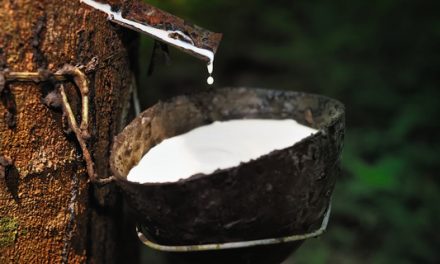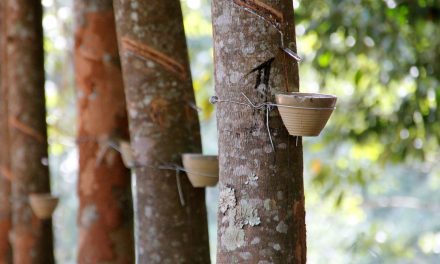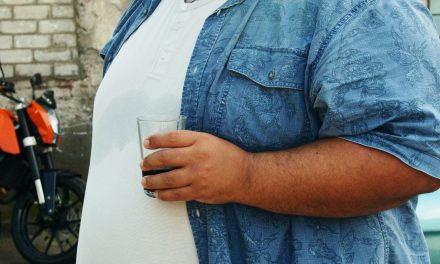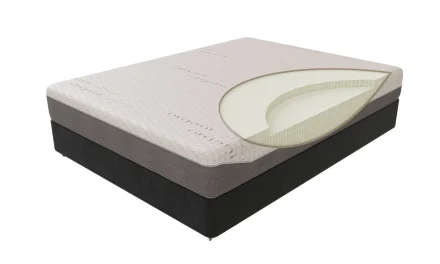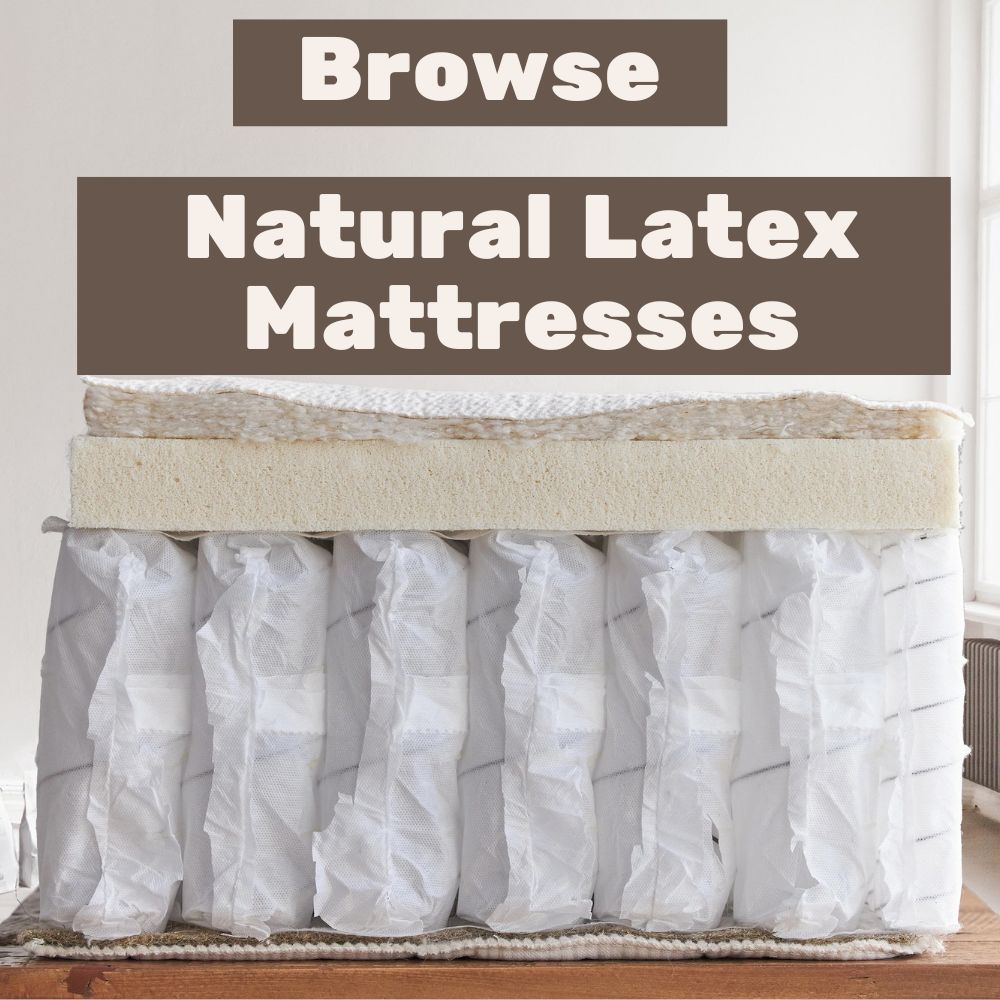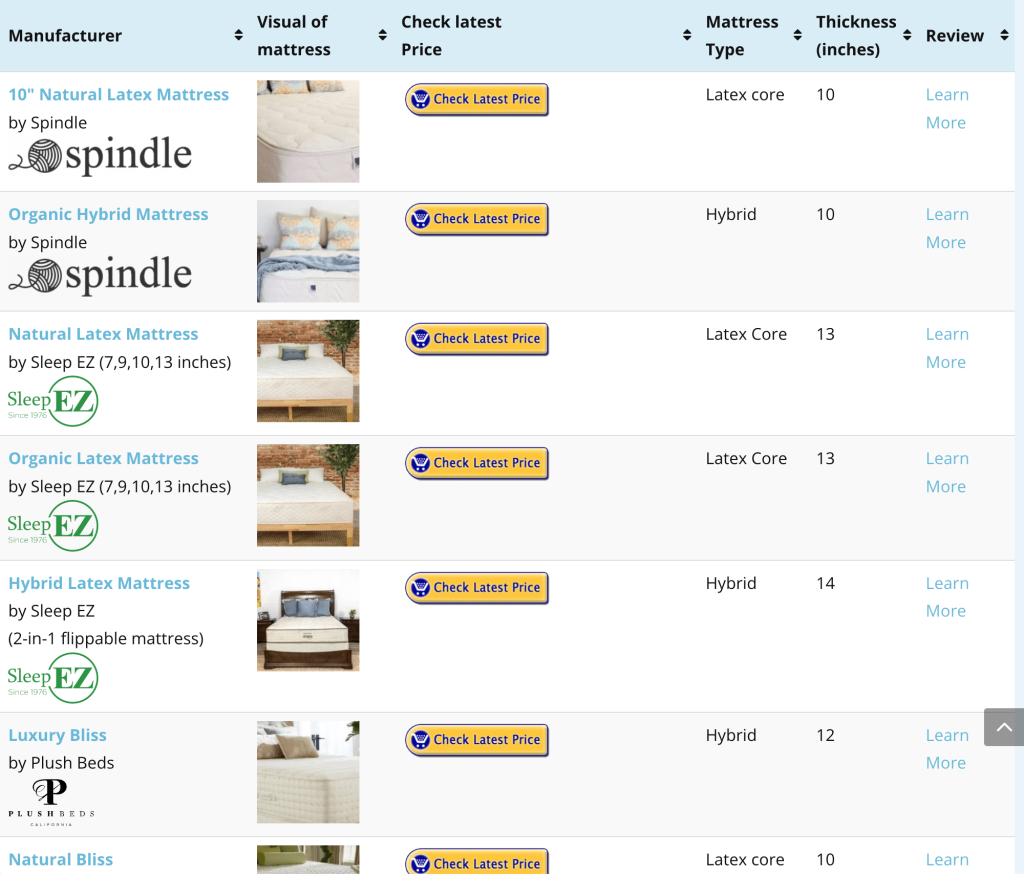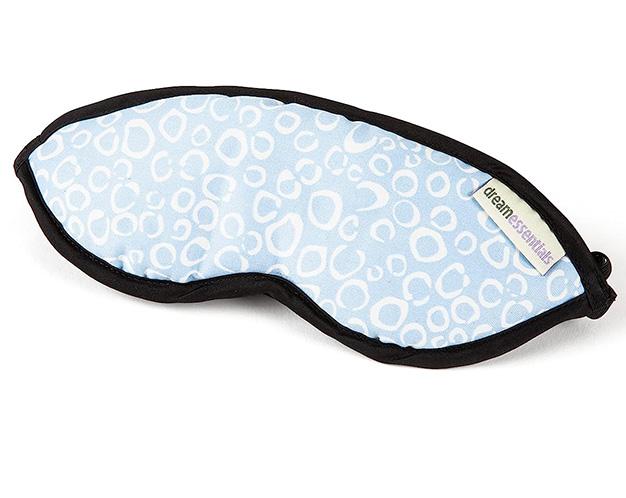Table of Contents
Natural latex mattresses are wonderful sleeping accessories. They provide a firm but comfy support for the spinal column during sleep which translates to improved musculoskeletal health and better sleep quality. A 100% natural latex mattress is also the least toxic mattress you can find in the market. This is due to the fact that such mattresses are usually made from naturally occurring materials and no synthetic chemicals are used in their fabrication. Furthermore, natural latex mattresses are known to be more durable than traditional foam mattresses.
While the benefits of using a 100% natural latex mattress are widely known, the in-depth details of the processes involved in their fabrication are less understood. The delivery of a plush latex mattress to your home is the final stage of an interesting journey that begins on a rubber tree Hevea Brasiliensis plantation in a tropical climate.
This article will give you a detailed insight into this process and you will definitely become more appreciative of your 100% natural latex mattress after
reading it.
STAGE ONE: COLLECTING THE RAW MATERIAL
The main ingredient used in making a 100% natural latex mattresses is obtained from the Hevea brasiliensis
tree (commonly called the rubber tree). This tree is cultivated on a large scale in Southeast Asia and West Africa where the tropical climate favors its growth. Latex is the name given to the sticky white sap produced by the rubber tree when its trunk is cut.
The process of harvesting this sap begins with the making of deep spiral incisions into the trunk of the rubber tree. A vessel is placed at the end of this spiral to collect the latex oozing from the tree. For several hours the latex steadily flows along the incisions into the collecting vessel. Latex undergoes coagulation when exposed to direct sunlight. This causes it to harden prematurely which complicates the processing cycle. To prevent this from happening, latex is usually harvested at night or in the early morning hours before the sun comes out.
IMPACT OF LATEX HARVESTING ON THE LOCAL POPULATION
The cultivation of rubber trees is predominantly carried out in Asian and a few African countries. The majority of the population in these countries lives below the poverty line with most of their income being earned from the cultivation of commercial crops such as the rubber tree. The harvesting of latex is thus the only dependable source of income for many families in these areas.
It is clear that the livelihood of these farmers is fully reliant on the sustained demand for latex-based products such as mattresses. For this reason, every time you purchase a 100% natural latex mattress you will be directly contributing to the sustenance of a low-income household in a country far away.
STAGE TWO: PROCESSING THE LATEX
Liquid latex undergoes rapid coagulation whenever it is exposed to open air or direct sunlight for extended periods. It is therefore important for the harvested latex to be transported to the processing facility within the shortest time possible. To minimize the chances of untimely coagulation, the liquid latex is usually transferred into large airtight buckets and transported to the nearest processing plant within twenty-four hours after harvesting. In some rare cases, small amounts of ammonia may be added into the latex during transportation. This is just another method of delaying the onset of coagulation.
Once the liquid latex arrives in the processing factory, it is poured from the buckets into a large cylindrical stainless steel tank through a sieve which removes unwanted particles and coagulated lumps. This stainless steel tank contains a shaft which spins rapidly to combine the latex with air and produce a thick foamy paste. Air particles are incorporated into the latex to ensure that the mattresses produced are spongy. Skipping this process will lead to the production of stiff, densely-packed mattresses that would be very hard and uncomfortable to
sleep on. This foamy latex will then be taken to the next stage where the molding of the mattresses will be done.
STAGE THREE: MOLDING THE MATTRESSES
This is the stage where the liquid latex that has been blended with tiny air particles is finally transformed into a solid mattress. This process can be carried out using two methods; the Dunlop method or the Talalay method.
These methods produce latex mattresses with subtle differences in their properties, some of which will be discussed later in this article.
DUNLOP METHOD
This is the oldest method for manufacturing latex mattresses and has been used for close to a century. In this process, the latex foam is poured into a large rectangular mold containing several vertical rods which create perforations within the finished mattress. These perforations help to create a natural air-flow around the
mattress to maintain an ideal temperature for anyone using it. This mold is then shut and heated to a high temperature in a process called vulcanization. During this process, the vertical rods running through the latex also help to ensure that the temperature is evenly distributed around the mold.
After the latex has undergone vulcanization for a specified amount of time, it is taken out of the mold and sprayed with water to clean up any soapy compounds that may have formed on its surface. At this point, the latex will have transformed from a foamy liquid to a rubbery mattress with several perforations running through it from the top to the bottom layers. After washing, the mattress is placed into an oven where it is baked to remove any excess moisture.
TALALAY METHOD
In this method, the latex foam is transferred into a mold containing vertical rods just like in the Dunlop process. However, instead of the mold being heated, it is connected to a vacuum pump. This vacuum pump sucks out air bubbles from the mixture while at the same time ensuring the latex is evenly distributed within the mold. The mold is then covered with liquid carbon dioxide to rapidly freeze the mattress inside. This is done to prevent the settling of denser particles at the bottom of the mold which may lead to the production of mattresses with uneven densities
across the layers. The mold is then heated to make the mattress rise to the required thickness level before it is taken out.
HOW NATURAL LATEX MATTRESSES PRODUCED USING THE DUNLOP PROCESS COMPARE TO THOSE PRODUCED USING THE TALALAY PROCESS
Natural latex mattresses made using the Dunlop process have slight differences to those made using the Talalay process. Mattresses made using the Dunlop process tend to be denser and are significantly heavier than those made using the Talalay process. The Dunlop process also produces mattresses with heavier bottom layers due to the natural sedimentation process that occurs in the mold causing heavier particles to settle at the bottom during the solidification of the latex.
Talalay natural latex mattresses are usually softer and have a bouncier feel. These mattresses also tend to have more uniformly distributed latex particles across them since the vacuuming process they undergo discourages the occurrence of sedimentation.
STAGE FOUR: QUALITY INSPECTION AND GRADING OF THE MATTRESSES
It is normal to occasionally find defective products coming out of large-scale production lines. The manufacturing of natural latex mattresses is no exception. Each mattress being extracted from the mold, therefore, has to go
through a meticulous inspection process to ensure consistency in quality. The first stage of the inspection is conducted visually. Specially trained inspectors scrutinize each individual natural latex mattress for any visible
deformity. All defective mattresses are immediately taken out of the production line and discarded. The ones deemed to be good enough proceed to the next inspection stage.
Stage two of the quality inspection is carried out using mechanized tools and computerized hardware. These machines are used to test the softness of the mattress and its susceptibility to shrinkage and premature wear. To ensure all mattresses have a uniform acceptable stiffness, the mattresses are placed under a compressing
machine which compresses different parts of each mattress and transfers the data to a computer. This computer then uses the gathered data to categorize each of the natural latex mattresses according to their stiffness levels.
To measure durability, a random mattress is selected for testing from each batch. The mattress is placed under a heavy rotating barrel which continuously rotates over the mattress and the number of completed rotations recorded. This rotating barrel is used to mimic a human body lying on the mattress. Since the repeated turning and shifting of the position of a person when lying on a mattress is directly responsible for the wear of the latex layer below, the number of times the barrel spins before the mattress deforms corresponds to its overall durability.
STAGE FIVE: STITCHING THE COVER AND ADDING FINE DETAILS TO THE MATTRESSES
Even after the quality inspection process is completed, the mattresses are still not ready for use. At this stage, they are basically rectangular pieces of solid natural latex. Some of these mattresses may also have minor inconsistencies around the edges which need to be trimmed. Each natural latex mattress is first placed on a calibrated table and carefully trimmed to give it a sharp defined outline and also to ensure its overall dimensions are spot-on. This trimming is usually done by hand which not only produces a high level of accuracy but also gives each mattress an intimate touch.
The next step involves upholstering each mattress with a fabric cover. The purpose of this cover is to give each mattress a pleasant visual appeal while also providing a protective layer against dirt. Most mattress covers also contain additional padding and thus tend to add to the comfort of the finished mattress. The cover is stitched separately by a giant sewing machine. An additional lining may be placed under this cover to prevent it from slipping over the mattress. The mattress is then inserted into the cover and flanges are stitched around its edges to firmly secure the cover in place.
Once the cover and flanges have been stitched onto the mattress, the production stage is complete. Labels can now be placed on the finished mattresses providing details on their specifications, care instructions, and warranty
details. Finally, the finished natural latex mattresses are packed in clear plastic covers and transported to their point of sale.
There is no doubt that the manufacturing process involved in making a 100% natural latex mattress is long and intensive. The end result, however, is usually an exceptionally made non-toxic mattress that is worth the extra effort.
BENEFITS OF THE NATURAL MATTRESS INDUSTRY IN RELATION TO THE SYNTHETIC MATTRESS INDUSTRY
The large global demand for natural latex mattresses has made a huge impact on the environment and the economy in the areas where large-scale latex production is carried out.
ENVIRONMENTAL IMPACT
Latex is extracted from the Hevea brasiliensis tree which is also called the rubber tree. A typical rubber tree plantation contains hundreds or even thousands of these trees at any particular time. Cultivation
of this crop significantly increases the forest cover in the latex-producing countries. This added tree cover contributes to an improvement of the prevailing climatic conditions and better air quality. Furthermore, the production process of natural latex mattresses does not utilize nor release any hazardous chemical compounds to the environment. This contrasts with the production process of synthetic foam mattresses which results in the production of large quantities of chemical industrial waste due to the fact that most of the raw materials used are petrochemical compounds like polyurethane. Most of this waste eventually ends up being released into the environment with catastrophic consequences.
ECONOMIC IMPACT
In the manufacture of synthetic foam mattresses, all raw materials are sourced from centralized multinational companies specializing in petrochemical production. In such cases, the revenue generated from this production is only enjoyed by the few people who have a stake in the chemical production industries. Natural latex mattresses are however made using raw materials sourced directly from farming communities in latex-producing countries. As a result, these farmers enjoy a larger share of the revenue generated through the sale of latex mattresses. It is therefore fairly logical to conclude that the manufacture of natural latex mattresses generates revenue not just for the companies manufacturing them but also the local population in the latex-producing areas.

